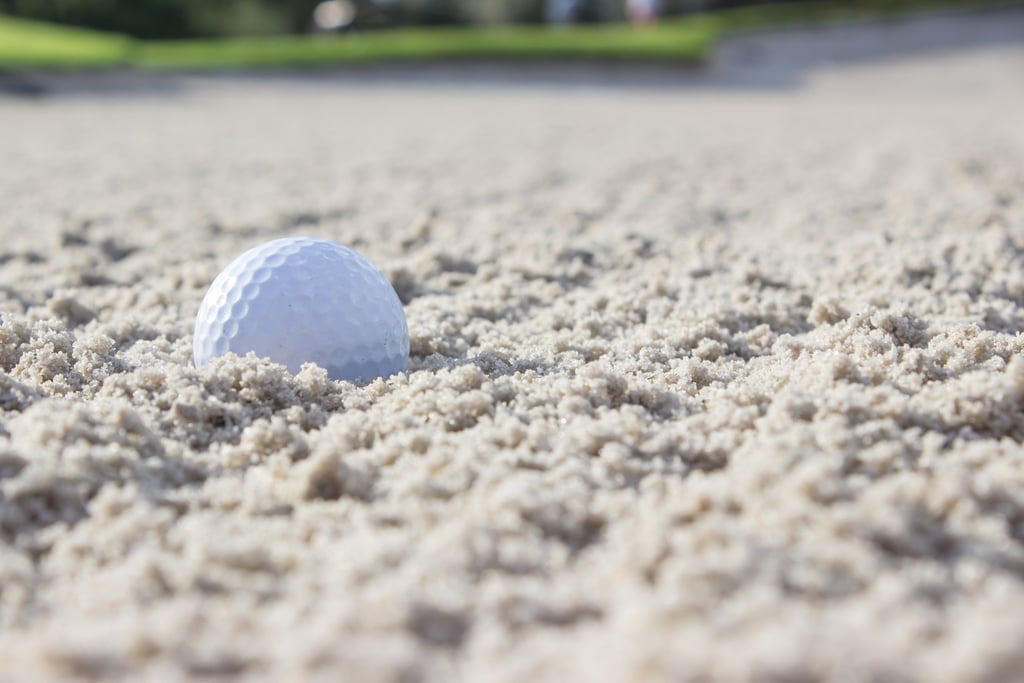The 69° Wedge, a Desert Wash, and the Wisdom of Ken Martin
This isn’t your typical club review. What starts as a test drive of a novelty wedge becomes a deep dive into short game simplicity, bounce theory, and the wedge-wielding wisdom of PGA Master Instructor Ken Martin. From Tucson sand washes to Augusta greens, this story blends golf nerdery with real instruction, honoring the teacher who reminded one student—and maybe all of us—that great golf starts with feel, not flash.
COLLEGE OF GOLFBBFA
Steven Bradley
4/22/20255 min read
You can learn much about any good golfer from hearing them tell how they fell in love with the game. Believe me, any good golfer has fallen in love. The game is too complicated—physically, mentally, and emotionally—to put in the work required to become adept at doing it without passion.
As the legendary Tiger Woods said at his Hall of Fame induction, a ceremony that had felt predestined since the Tiger Slam more than two decades earlier: There are no shortcuts to being good at golf. "Number one, you won't get the results," Woods said. “Number two, and more importantly, you won't deserve it. You didn't earn it."
Any prowess I've ever seen on a golf course has always been well-earned. Thus, you could likely tell from watching me swing that I learned the game from someone who taught rhythm, tempo, and a tension-free golf swing. If you asked me, I’d tell you that man was Harvey Penick. I never had a real lesson—but I had the Little Red Book... and Penick taught me the grip with a yardstick, the takeaway with a bucket, and the power of the transition move in golf with the “Slow-Motion Drill”—no club or ball required. Those are still the fundamentals I turn to today when things go awry.
Which brings me to Ken Martin—and the first real golf club he ever owned: a sand wedge. He spent hours as a kid in the desert by his house in Tucson, Ariz., just hitting balls into and out of the sand.
As such, when Ken and I became acquainted—he as a former coach and caddie for a Masters champion who had found his calling in academia and me as a new master’s student who had no real clue how he planned to teach golf to other people—we quickly identified each other as fellow “wedge nerds.”
I’d used that term during class and was a little afraid I’d hurt Ken’s feelings by talking about how some golfers, such as myself, were “wedge nerds.” Then, at the end of class in a segment he’d had prepared, Ken pulled out a replica of the original Sandy Andy wedge Moe Norman legendarily used as a “cheat code” out of the sand to avoid opening his clubface and swinging across the target line.
Ken held it up on screen—it has 20 degrees of bounce and looks cartoonish even for a golf science class—and dissected the novelty of the design. I realized then that I hadn't offended him with the "nerd" word.
But Professor Martin and I then went on to revel in our shared nerddom, talking Gene Sarazan, the right makeup for a modern player’s bag, why I’m an idiot for carrying a 62-degree wedge, and many other topics related to the short game.
One thing about me, however, is that if you call me an idiot, I’m likely to show you just how big of an idiot I can be. So, I’ve decided to try out the 69-degree wedge from 69Golf. Admittedly, I initially got a laugh out of what I can only imagine was the entire launching pad for the company—the fact that the number 69 is funny—but personally, and I say this only as someone who carries a +2.0 handicap, my initial guess is that virtually every golfer I know should avoid more loft around the greens like the plague.
But I am not most golfers, nor am I known for my wisdom in risk assessment. Honestly, I almost feel like a right-handed Phil Mickelson with this thing… the one before he allowed Dave Pelz to give him putting lessons.
To my point, however, I like it best for long bunker shots. While it has a moderate 10 degrees of bounce, bounce is always relative to the loft of the clubface, and with that loft angle already nearly 70 degrees, there’s no real reason to open it up. If anything, I bend my knees more and feel my hands lead the handle through impact to ensure I hit sand before ball without allowing the face to close (and, thus, dig).
I’m not sure I’d ever carry a 69-degree wedge in a competitive environment, but playing in the sand with it is a lot of fun.
🎓 Spotlight: Professor Ken Martin on Wedges, Bounce, and Why Simplicity Wins
Ask Professor Martin how he learned to hit wedges; he won’t mention a launch monitor. He’ll tell you about a dry wash in Tucson and a sand wedge that was more of an extension of the hand than a club. “I spent hours out there,” he told us during class, “just hitting balls up in the desert and out of the sand.”
That desert intuition never left him. And once he discovered the language and science to explain what his hands already knew, Ken Martin didn’t just become a better player—he became a teacher. The kind of wedge nerd who can hold up a Sandy Andy on Zoom and make you question every club in your bag.
Ken’s expertise covers the whole short game, but on this occasion his curiosity was bounce—not just as a spec, but as a design philosophy. He believes in high-bounce sand wedges, especially for players in softer Southern conditions. “Bounce is your friend,” he says. “Most amateurs try to manipulate the clubface to use it, but with a properly fit wedge, you don’t have to. You can keep the face square and just hit the sand.”
That’s the key. Simplicity. Less manipulation. More consistent contact.
He’s not dogmatic, though. His current setup? A 50-degree, 54-degree, 58-degree, and PW. “I use the straighter-face wedges more than the high-loft ones,” he says, “but the 54—with more bounce—is my favorite. It’s the most versatile.”
Ken has played, caddied, and coached at the highest levels, but he still values the walk to the green with one wedge and one ball. He talks about visualizing the hole-out. About finding confidence through repetition. About hitting it five inches behind the ball and still smiling.
In short, he reminds you why you fell in love with the short game in the first place. And why you should stop fiddling with your backswing and practice your bunker play instead.
Because for wedge nerds like Ken—and students like me—the sand is where a story starts.
Ken Martin is a Class "A" Member of the PGA of America since 1988, certified in Instruction and General Management and currently teaching at Keiser University College of Golf and the Village Golf Club in Royal Palm Beach, Fla. He has played in the 2011 and 2012 Senior PGA Championships and the 2014 U.S. Senior Open, and previously caddied for Masters champion Sandy Lyle.
🔺 Recommended Setup: What Ken Would Put in Your Bag
Top-end at 58 degrees (not 60 or higher):
Ken suggests most golfers—especially in soft conditions—should max out loft at 58 degrees, not 60 or 62, and not 69. He even calls the 60-degree wedge a “wrecking ball” for many short games.
More bounce than you need:
Ken recommends a higher bounce (12–14 degrees) for more forgiveness and consistent results, particularly in softer turf or bunkers typical in the Southeast.
Balanced wedge progression:
Ken’s preferred setup—PW, 50, 54, and 58 degrees—offers:
Consistent yardage gaps
A versatile 54-degree option with high bounce
A 58-degree wedge for specific specialty shots only
Avoid unnecessary loft:
The 69-degree wedge is fun but not built for pressure. For most players, it’s more show than go.
Bottom Line:
Play smarter, not edgier. Let the bounce work. Keep it simple.


